Everest avalanche: Search for missing guides abandoned
- Published
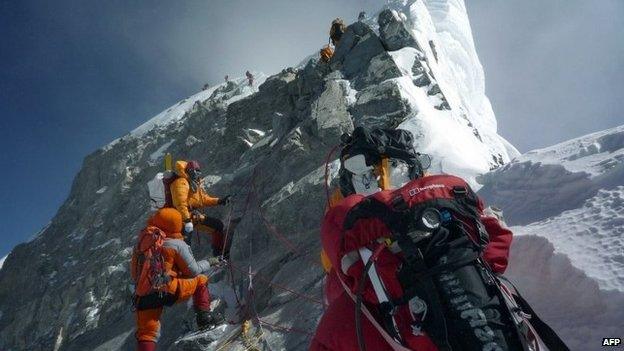
Sherpas often prepare the route for the mountaineers to follow
The search for three Sherpa guides, missing after an avalanche on Mount Everest killed 13 of their colleagues, has been called off.
The avalanche struck on Friday in an area just above Everest base camp at 5,800m (19,000ft).
The guides had climbed up the slope early that morning to fix ropes for climbers and prepare the route.
It was the single deadliest accident in modern mountaineering on the world's highest peak.
"We have decided to stop the search for the missing. We have been unable to identify the location of bodies and at this stage it is difficult to find them in the snow," tourism ministry official Dipendra Paudel told the AFP news agency.
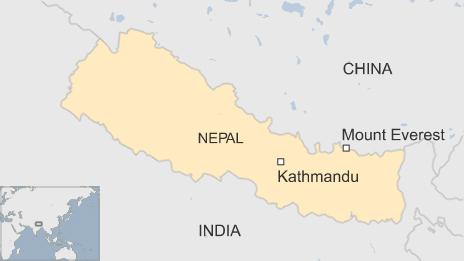
The avalanche struck a passage called the Khumbu Icefall, which is riddled with crevasses and large ice boulders that can break free without warning.
Although relatively low on the mountain, climbers say it is one of its most dangerous points - but there are no safer paths along the famous South Col route first scaled by Sir Edmund Hillary and Tenzing Norgay in 1953.
An injured survivor told his relatives that the path was unstable just before the avalanche hit.
Sherpas often make 20-25 round trips to carry kit and supplies to advanced camps, exposing them to greater risk. The most endangered are the so-called Icefall Doctors - a team that maintains and fixes the route.
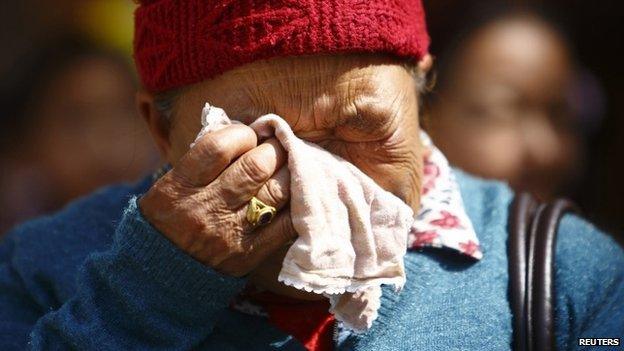
The Sherpa people are one of the main ethnic groups in Nepal's alpine region
It was the first major avalanche of this year's climbing season on Everest, which has been scaled by more than 3,000 climbers.
The rising number of tourists has raised concerns about safety and environmental damage, although Nepal still plans to cut fees from next year for those wishing to make the climb.
The government has issued permits to 334 foreign climbers this season, up from 328 for the whole of last year. An equal number of guides also climb to help the foreign mountaineers.
Some 250 climbers have died on the mountain, which is on the border between Nepal and the Chinese region of Tibet and can be climbed from both sides.
- Published18 April 2014
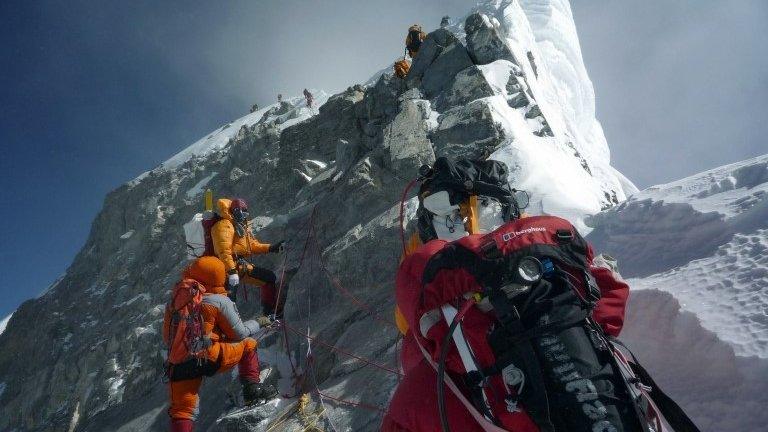
- Published18 April 2014
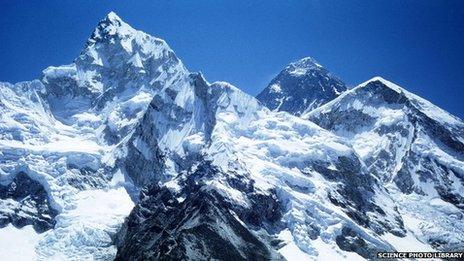
- Published3 March 2014
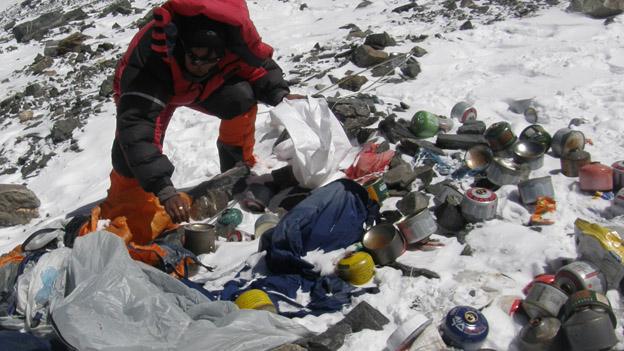
- Published21 February 2014

- Published29 April 2013
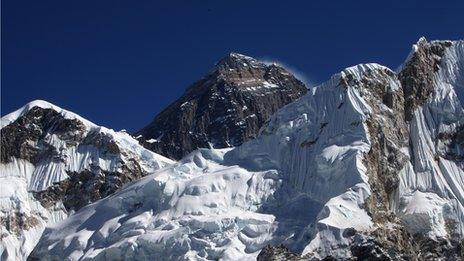
- Published2 August 2013
